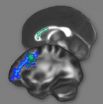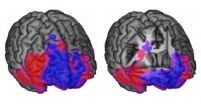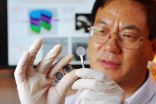(Press-News.org) Ann Arbor, Mich. — Australian doctors-in-training spend significantly less time consulting with pediatric patients than they do with adults, according to a new study published in the journal Australian Family Physician.
The study found that the proportion of longer consultations – more than 20 minutes -- for children was significantly less than that for adults and seniors among general practice registrars, says Gary Freed, M.D., M.P.H., the lead author on the study and Australian-American health policy fellow, Australian Health Workforce Institute at the University of Melbourne and professor of pediatrics and child health policy at the University of Michigan.
The study also found that among the general practitioner registrars in the study, the overall duration of visits for children were much shorter than for adults, Freed says. In the study, of all consultations with children under 4 years old, only one consultation was for more than 40 minutes.
"The fact that all but one of the registrars in the study never saw a child for an extended consultation is quite remarkable," Freed says.
Similar demographic trends are occurring in the United States and studies have also shown that family physicians provide care for fewer children than in years past, Freed says. Some family physician training programs in the United States are exploring novel ways to ensure their residents receive adequate exposure to pediatric patients.
Freed and his co-authors also found that for patients 14 and under in Australia, a greater proportion of the visits were attributed to the 10 most common diagnoses, compared with adult patients. That suggests the registrars are getting exposed to a limited range of ailments and symptoms among children.
"These results raise the possibility that exposure of registrars to chronic
illness in children, and to a range of diagnostic conditions, may be quite limited," says Freed.
"Longer consultations with pediatric patients are most likely to be used for the primary care management of chronic disease, behavioral and developmental assessments and counseling, and preventive care," he says. "But the relative paucity of longer consultations for children seen in this study suggests that registrars may not be gaining experience in these types of clinical experiences as part of their training."
This is of particular concern, Freed says, because there is a plethora of behavioral and development issues that arise especially during the 5-14 age range.
"We are not saying all age groups should have the same proportion of longer consultations. However, the magnitude of the variation between the age groups of patients is concerning," Freed says. "Simply put, some types of visits for children take more time than others. If registrars do not gain adequate experience in providing primary care for children with chronic illness or conducting behavioral assessments or providing preventive counseling, they will enter independent practice unprepared to care for children."
Specifically with regard to children, Freed, a pediatrician, believes that registrars must see enough normal development at different ages to be able to recognize abnormal development.
In Australia, many current government health care strategies are focused on the needs of a growing aging population. While the actual number of children has increased by about 12 percent since 1996, the proportion of children in the country aged 0 to 19 years has fallen from 38 percent in 1971 to 25 percent in 2010.
This is indicative of a demographic trend where the population of adults and seniors is rising at a faster rate than that of children.
"As the proportion of children in general practice will likely continue to fall over the coming decade, specific efforts and interventions may be needed to ensure that
general practitioners do not simply train to become primary care physicians of adults and the elderly," says Freed.
### Additional authors: Of the University of Melbourne: Neil Spike, M.B.B.S., F.R.A.C.G.P., and Peter Brooks, A.M. M.B.B.S., F.R.A.C.P., M.D., F.A.F.R.M., F.A.F.P.H.M; Of the University of Newcastle: Parker Magin, Ph.D., F.R.A.C.G.P., Simon Morgan, M.B.B.S., M.P.H., F.R.A.C.G.P., and Michael Fitzgerald, BMath.
About the University of Michigan Health System:
For more than 160 years, the University of Michigan Health System has been a national leader in advanced patient care, innovative research to improve human health and comprehensive education of physicians and medical scientists. UMHS includes the U-M Hospitals & Health Centers, with its three hospitals and dozens of outpatient health centers and clinics throughout Michigan; the U-M Medical School with its Faculty Group Practice and research laboratories; and the Michigan Health Corporation.
The three U-M hospitals -- University Hospital, C.S. Mott Children's Hospital, and Von Voigtlander Women's Hospital – have been recognized numerous times for excellence in patient care, including 17 years on the U.S. News & World Report honor roll of "America's Best Hospitals". The U-M Medical School is one of the nation's biomedical research powerhouses, with total research funding of more than $490 million. Together, the 22,000 members of the UMHS community are creating the future of health care through discovery.
For more information about pediatric care at U-M, visit www.mottchildren.org
Australian general practitioners in training spend less time with peds patients than with adults
Registrars may not get enough exposure to children during training, according to new study
2012-08-22
ELSE PRESS RELEASES FROM THIS DATE:
Close contact with young people at risk of suicide has no effect
2012-08-22
Researchers, doctors and patients tend to agree that during the high-risk period after an attempted suicide, the treatment of choice is close contact, follow-up and personal interaction in order to prevent a tragic repeat. Now, however, new research shows that this strategy does not work. These surprising results from Mental Health Services in the Capital Region of Denmark and the University of Copenhagen have just been published in the British Medical Journal.
Researchers from Mental Health Services in the Capital Region of Denmark and the University of Copenhagen have ...
Rewired visual input to sound-processing part of the brain leads to compromised hearing
2012-08-22
ATLANTA – Scientists at Georgia State University have found that the ability to hear is lessened when, as a result of injury, a region of the brain responsible for processing sounds receives both visual and auditory inputs.
Yu-Ting Mao, a former graduate student under Sarah L. Pallas, professor of neuroscience, explored how the brain's ability to change, or neuroplasticity, affected the brain's ability to process sounds when both visual and auditory information is sent to the auditory thalamus.
The study was published in the Journal of Neuroscience.
The auditory thalamus ...
Intense prep for law school admission test alters brain structure
2012-08-22
Intensive preparation for the Law School Admission Test (LSAT) actually changes the microscopic structure of the brain, physically bolstering the connections between areas of the brain important for reasoning, according to neuroscientists at the University of California, Berkeley.
The results suggest that training people in reasoning skills – the main focus of LSAT prep courses – can reinforce the brain's circuits involved in thinking and reasoning and could even up people's IQ scores.
"The fact that performance on the LSAT can be improved with practice is not new. ...
Study shows long-term effects of radiation in pediatric cancer patients
2012-08-22
For many pediatric cancer patients, total body irradiation (TBI) is a necessary part of treatment during bone marrow transplant– it's a key component of long term survival. But lengthened survival creates the ability to notice long term effects of radiation as these youngest cancer patients age. A University of Colorado Cancer Center study recently published in the journal Pediatric Blood & Cancer details these late effects of radiation.
"These kids basically lie on a table and truly do get radiation from head to toe. There is a little blocking of the lungs, but nothing ...
New laboratory test assesses how DNA damage affects protein synthesis
2012-08-22
RIVERSIDE, Calif. — Transcription is a cellular process by which genetic information from DNA is copied to messenger RNA for protein production. But anticancer drugs and environmental chemicals can sometimes interrupt this flow of genetic information by causing modifications in DNA.
Chemists at the University of California, Riverside have now developed a test in the lab to examine how such DNA modifications lead to aberrant transcription and ultimately a disruption in protein synthesis.
The chemists report that the method, called "competitive transcription and adduct ...
NASA sees an active tropical Atlantic again
2012-08-22
The Atlantic Ocean is kicking into high gear with low pressure areas that have a chance at becoming tropical depressions, storms and hurricanes. Satellite imagery from NASA's Terra and Aqua satellites have provided visible, infrared and microwave data on four low pressure areas. In addition, NASA's GOES Project has been producing imagery of all systems using NOAA's GOES-13 satellite to see post-Tropical Storm Gordon, Tropical Depression 9, and Systems 95L and 96L.
Tropical Storm Gordon is no longer a tropical storm and is fizzling out east of the Azores. Tropical Depression ...
Thinking and choosing in the brain
2012-08-22
PASADENA, Calif.—The frontal lobes are the largest part of the human brain, and thought to be the part that expanded most during human evolution. Damage to the frontal lobes—which are located just behind and above the eyes—can result in profound impairments in higher-level reasoning and decision making. To find out more about what different parts of the frontal lobes do, neuroscientists at the California Institute of Technology (Caltech) recently teamed up with researchers at the world's largest registry of brain-lesion patients. By mapping the brain lesions of these patients, ...
Multiple factors, including climate change, led to collapse and depopulation of ancient Maya
2012-08-22
TEMPE, Ariz. — A new analysis of complex interactions between humans and the environment preceding the 9th century collapse and abandonment of the Central Maya Lowlands in the Yucatán Peninsula points to a series of events — some natural, like climate change; some human-made, including large-scale landscape alterations and shifts in trade routes — that have lessons for contemporary decision-makers and sustainability scientists.
In their revised model of the collapse of the ancient Maya, social scientists B.L. "Billie" Turner and Jeremy "Jerry" A. Sabloff provide an up-to-date, ...
Time flies when you're having goal-motivated fun
2012-08-22
Though the seconds may tick by on the clock at a regular pace, our experience of the 'fourth dimension' is anything but uniform. When we're waiting in line or sitting in a boring meeting, time seems to slow down to a trickle. And when we get caught up in something completely engrossing – a gripping thriller, for example – we may lose sense of time altogether.
But what about the idea that time flies when we're having fun? New research from psychological science suggests that the familiar adage may really be true, with a caveat: time flies when we're have goal-motivated ...
Self-charging power cell converts and stores energy in a single unit
2012-08-22
Researchers have developed a self-charging power cell that directly converts mechanical energy to chemical energy, storing the power until it is released as electrical current. By eliminating the need to convert mechanical energy to electrical energy for charging a battery, the new hybrid generator-storage cell utilizes mechanical energy more efficiently than systems using separate generators and batteries.
At the heart of the self-charging power cell is a piezoelectric membrane that drives lithium ions from one side of the cell to the other when the membrane is deformed ...
LAST 30 PRESS RELEASES:
Manta rays create mobile ecosystems, study finds
Study: Mixed results in using lipoic acid to treat progressive multiple sclerosis
Norbert Holtkamp appointed director of Fermi National Accelerator Laboratory
New agentic AI platform accelerates advanced optics design
Biologists discover neurons use physical signals — not electricity — to stabilize communication
Researchers discover that a hormone can access the brain by hitchhiking
University of Oklahoma researcher awarded funding to pursue AI-powered material design
Exploring how the visual system recovers following injury
Support for parents with infants at pediatric check-ups leads to better reading and math skills in elementary school
Kids’ behavioral health is a growing share of family health costs
Day & night: Cancer disrupts the brain’s natural rhythm
COVID-19 vaccination significantly reduces risk to pregnant women and baby
The role of vaccination in maternal and perinatal outcomes associated with COVID-19 in pregnancy
Mayo Clinic smartwatch system helps parents shorten and defuse children's severe tantrums early
Behavioral health spending spikes to 40% of all children’s health expenditures, nearly doubling in a decade
Digital cognitive behavioral treatment for generalized anxiety disorder
Expenditures for pediatric behavioral health care over time and estimated family financial burden
Air conditioning in nursing homes and mortality during extreme heat
The Alps to lose a record number of glaciers in the next decade
What makes a good proton conductor?
New science reporting guide published for journalists in Bulgaria
New international study reveals major survival gaps among children with cancer
New science reporting guide published for journalists in Turkey
Scientists develop a smarter mRNA therapy that knows which cells to target
Neuroanatomy-informed brain–machine hybrid intelligence for robust acoustic target detection
Eight SwRI hydrogen projects funded by ENERGYWERX
The Lundquist Institute and its start-up company Vitalex Biosciences Announces Strategic Advancement of Second-Generation fungal Vaccine VXV-01 through Phase 1 Trials under $40 Million Competitive Con
Fine particles in pollution are associated with early signs of autoimmune disease
Review article | Towards a Global Ground-Based Earth Observatory (GGBEO): Leveraging existing systems and networks
Penn and UMich create world’s smallest programmable, autonomous robots
[Press-News.org] Australian general practitioners in training spend less time with peds patients than with adultsRegistrars may not get enough exposure to children during training, according to new study





